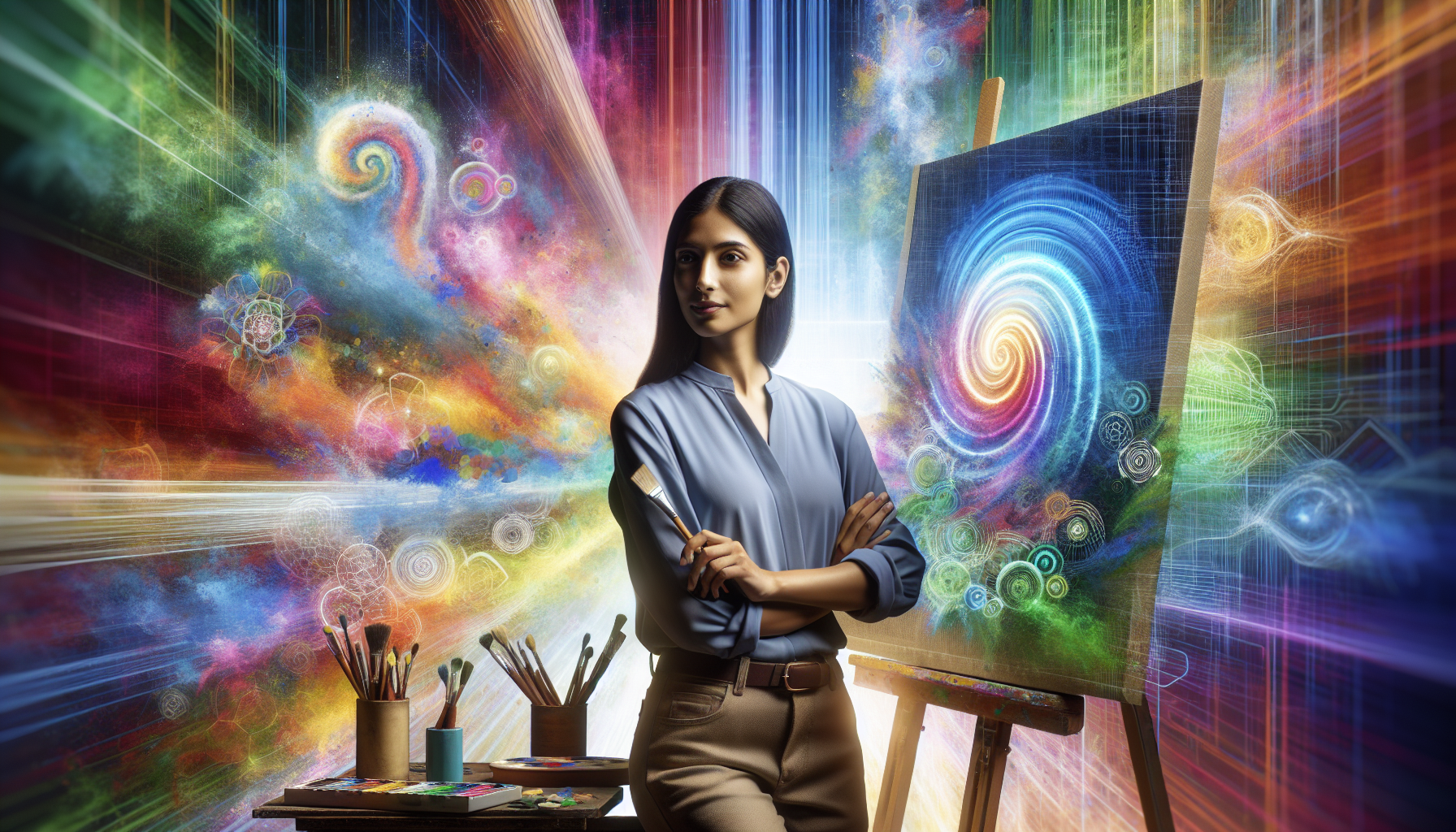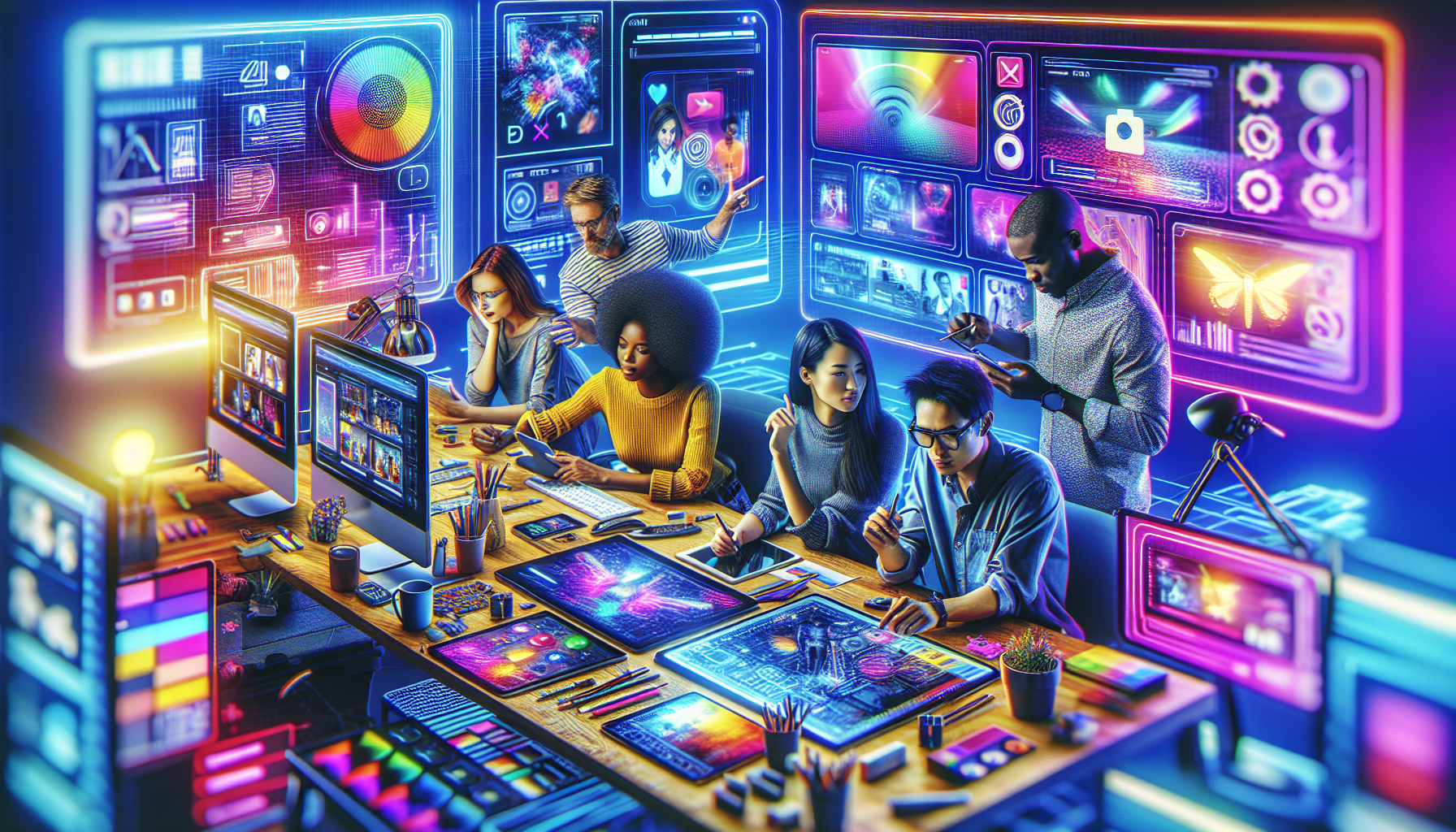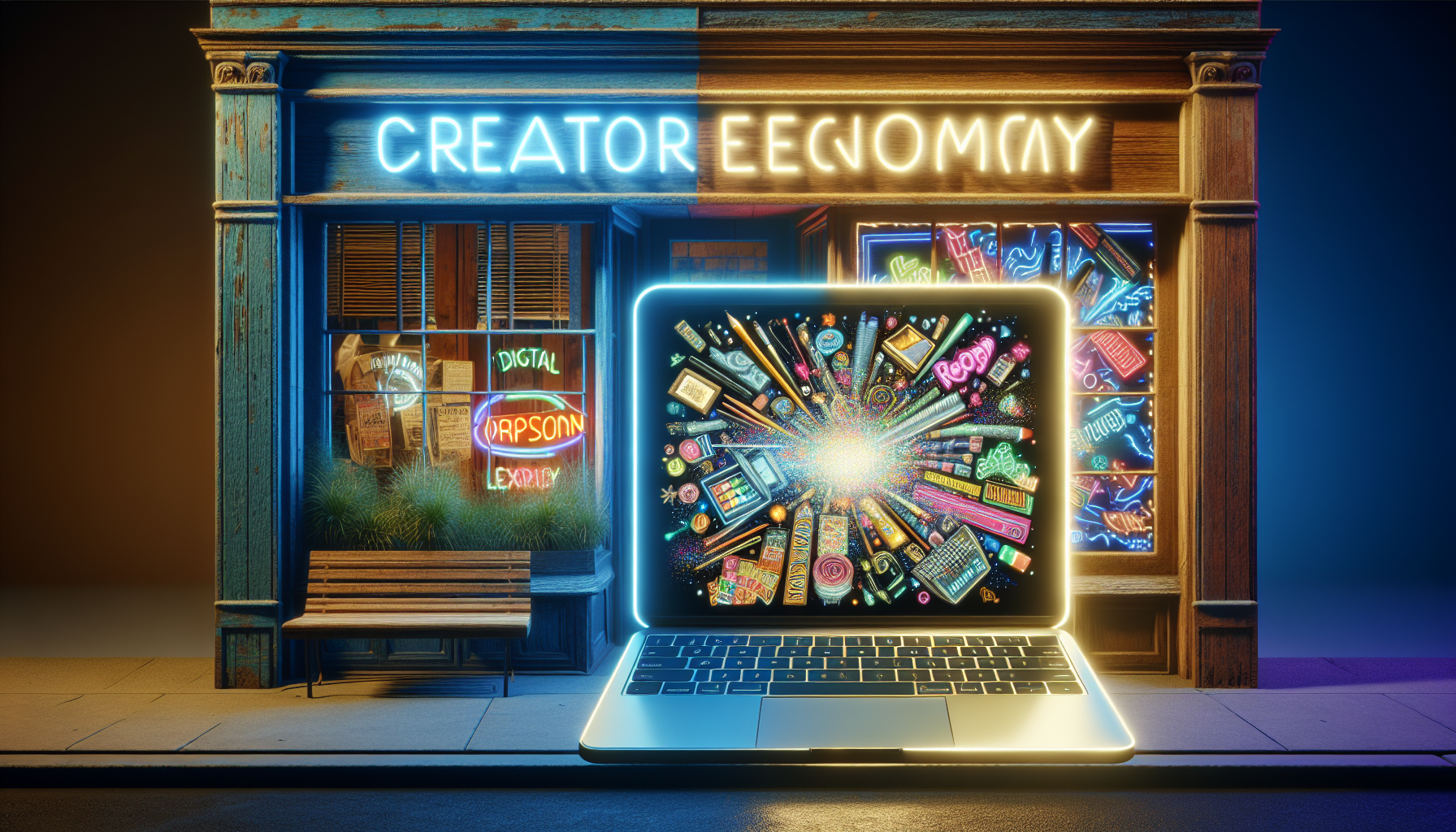
 The creator economy is revolutionizing how individuals monetize their passions and expertise. This ecosystem thrives on platforms like YouTube, Instagram, Patreon, and Substack, enabling creators to turn hobbies into lucrative careers by directly reaching their audiences. In this new landscape, the traditional barriers between creator and consumer are diminishing, offering creators unprecedented control over their work and income streams.
The creator economy is revolutionizing how individuals monetize their passions and expertise. This ecosystem thrives on platforms like YouTube, Instagram, Patreon, and Substack, enabling creators to turn hobbies into lucrative careers by directly reaching their audiences. In this new landscape, the traditional barriers between creator and consumer are diminishing, offering creators unprecedented control over their work and income streams.
What is the Creator Economy?
– The creator economy refers to a class of businesses built by individuals sharing their knowledge, skills, and creativity with a digital audience, often bypassing traditional media channels.
– Platforms empower creators with tools to produce and distribute content, attract followers, and create revenue through various means, such as ad revenue, subscriptions, and donations.
Real-World Examples
– YouTube: Creators can monetize through Google AdSense, sponsorships, and channel memberships. Take Marques Brownlee, who turned tech reviewing into a multi-million subscriber channel.
– Patreon: Artists, writers, and musicians use this platform to offer exclusive content to subscribers. Amanda Palmer, a musician, relies heavily on Patreon to fund her creative work and engage with fans.
Monetization Methods
1. Advertising Revenue: Creators earn through ads placed in or at the beginning of their content.
2. Brand Collaborations: Influencers partner with brands to promote products, impacting marketing strategies by tapping into niche audiences.
3. Fan Support: Platforms like Patreon allow fans to support creators directly, offering a consistent income source.
4. Merchandising: Many creators sell branded merchandise or products related to their content.
Impact on Digital Culture and Income Generation
The creator economy has democratized content production. Individuals previously constrained by geographic or financial limitations can now reach global audiences. This shift impacts marketing, pushing brands to adapt by creating more personalized and authentic campaigns. For creators, the impact is significant—they can build their brand identity, engage directly with audiences, and maintain creative control.
As digital culture continues to evolve, the creator economy is likely to expand, presenting new opportunities and challenges for both creators and marketers. The dynamism inherent in this economy underscores its transformative role in reshaping modern entertainment and business landscapes.
Key drivers behind the rise
Key drivers behind the rise of the creator economy are rooted in technological advancements, shifting consumer behavior, and the growing demand for authentic content. This landscape has rapidly evolved due to several core factors:
Technological Advancements
– Accessibility of Tools: User-friendly platforms like YouTube, Instagram, and TikTok provide intuitive content creation and distribution tools. High-quality production is no longer confined to elite studios; with just a smartphone, creators can produce engaging content that reaches millions.
– Monetization Mechanisms: Platforms have introduced diverse ways to monetize work. YouTube’s Partner Program and TikTok’s Creator Fund represent avenues for ad revenue, while affiliate programs and merchandise offer additional income streams.
Shifting Consumer Behavior
– Desire for Authenticity: Today’s audiences crave genuine and relatable content. Traditional advertisements are often deemed insincere, whereas creators provide a more personal, trustworthy approach.
– Engaged Communities: Creators foster dedicated communities, providing a two-way interaction that traditional media lacks. Followers feel a sense of connection and loyalty, enhancing engagement and supporting creators’ endeavors.
Economic Shifts
– The Gig Economy's Influence: As traditional job structures evolve, individuals seek flexible, independent work opportunities. The creator economy aligns perfectly, offering autonomy and control over one’s career path.
– Alternative Income Models: Beyond typical 9-to-5 jobs, creators benefit from diversified income streams. Platforms like Patreon and Substack enable consistent earnings through subscriptions and exclusive offerings, reducing reliance on a single income source.
Cultural Transformation
– Global Connectivity: The internet removes geographic barriers, allowing creators to reach diverse audiences worldwide. This global reach amplifies impact and increases opportunities for collaboration and cross-cultural influence.
– Influencer Marketing: Brands recognize the value of influencers and are increasingly channeling marketing budgets towards collaborations. This approach leverages creators’ audiences, driving brand awareness through tailored, authentic content.
As these drivers continue to propel the creator economy, its impact on marketing and digital culture will grow. The shift towards personalized and human-centric content highlights a broader trend away from traditional media, emphasizing the role of technology and community in shaping modern economic and creative pursuits.
New marketing strategies
In the dynamic landscape of modern advertising, brands are increasingly embracing innovative strategies shaped by the creator economy. Unlike traditional marketing approaches, the focus has shifted towards direct engagement and authentic storytelling achieved through collaborations with influencers and content creators.
Influencer Collaborations
In this new strategy, brands partner with creators to leverage their established trust and intimate audience connections. For instance, fashion labels collaborate with Instagram influencers to showcase new collections, while tech companies team up with popular YouTubers to review and promote their latest gadgets. This approach not only enhances brand visibility but also provides a personalized experience for audiences, which traditional ads often fall short of delivering.
Content Personalization
Another significant shift is the move towards personalized content marketing. With tools such as Google’s machine learning algorithms or Facebook’s audience insights, brands can tailor content to fit specific consumer interests and behaviors. This degree of personalization promises higher engagement rates, as consumers are more likely to respond to content that resonates with their unique preferences.
Utilizing Niche Platforms
Brands are also exploring niche platforms where creators build strong, loyal communities. Such platforms include Substack for newsletters or TikTok for short-form videos. By forging partnerships within these spaces, companies tap into highly engaged audiences, gaining access to consumer bases that are otherwise challenging to reach.
Real-World Impacts
These new strategies reflect a broader impact on marketing, emphasizing authenticity and community-driven engagement. The creator economy’s rise has empowered brands to transcend geographic and demographic limitations, fostering genuine connections that translate to real-world consumer actions.
Performance Metrics
To measure the success of these creator-driven campaigns, brands utilize advanced analytics tools to track performance metrics such as engagement rates, conversion rates, and audience growth. Technology like YouTube’s analytics suite or Instagram’s insights feature provides invaluable data that informs future marketing initiatives.
Challenges and Adaptations
While these new marketing strategies present promising opportunities, they also require brands to navigate challenges such as maintaining authenticity and ensuring a consistent brand message across diverse creator partnerships. As the creator economy continues to influence marketing, brands must adapt, remaining agile and open to innovative approaches that prioritize relatability and engagement.
In this transformative era, the creator economy’s impact reshapes marketing strategies, offering brands unprecedented opportunities to connect with consumers on a deeper, more personal level.
Benefits for brands and creators
As the creator economy burgeons, both brands and creators reap substantial benefits, transforming the marketing landscape. This dynamic ecosystem allows creators to leverage their unique voices and audiences while enabling brands to foster authentic consumer relationships.
One significant advantage for brands is the access to highly engaged audiences through creators. Unlike traditional marketing channels, creators maintain intimate connections with their followers, enabling brands to tap into these relationships for more effective and targeted promotion. For instance, beauty brands often collaborate with makeup influencers on YouTube, reaching millions of potential customers through authentic tutorials and product reviews.
From a creator’s perspective, the advent of diverse monetization opportunities represents a key benefit. Platforms like Patreon and Substack allow creators to build sustainable income models outside traditional advertising revenue. Musicians, writers, and artists can offer exclusive content or subscriptions, fostering a direct support system between them and their audiences. This interaction not only generates revenue but also enhances creators’ agency over their work.
The benefits extend to income diversification as well. Creators can engage in brand partnerships, sell merchandise, and use platforms like TikTok to reach global audiences. These avenues open up streams of income that blend creativity with commerce, reducing reliance on any single revenue source and expanding their financial resilience.
For brands, aligning with the creator economy also means adapting to a modern approach focused on engagement and authenticity. Collaborating with creators allows brands to craft narratives that resonate better with audiences, moving away from overt sales tactics to storytelling that connects on a personal level.
The impact of this collaboration is profound on digital culture, driving a more democratized and decentralized media landscape. It shifts the focus from mass-market appeals to niche, community-driven content, reshaping consumer expectations and interactions. This ongoing evolution promises continued growth and influence of the creator economy, building a bridge between creativity and commercial success that offers unprecedented potential for both brands and creators.
Future trends and challenges
As the creator economy continues to evolve, it is poised to influence digital culture and marketing strategies in novel ways. The future trends and challenges ahead are likely to redefine how creators, brands, and consumers interact within this dynamic ecosystem.
Technological Innovation
Emerging technologies such as virtual reality (VR), augmented reality (AR), and artificial intelligence (AI) are anticipated to play significant roles in the evolution of content creation. These technologies will offer creators new avenues to craft immersive experiences, thus broadening their creative horizons and deepening audience engagement. For instance, AR filters on platforms like Instagram are already popular, providing interactive features that captivate users and enhance content appeal.
The Role of Community Platforms
Platforms like Discord and Clubhouse have gained traction, supporting community-driven engagement. These platforms foster a sense of belonging among creators and audiences, enabling direct communication and collaboration. The ability to build niche communities where creators can directly interact with their followers will be increasingly valuable, offering brands opportunities to engage with highly invested audience segments.
Monetization Shifts
The diversification of income streams will continue, with creators exploring alternative monetization methods such as non-fungible tokens (NFTs) and blockchain-powered transactions. NFTs have introduced a new way for creators to value and sell digital art and content, democratizing revenue potential in unprecedented ways. As this market matures, it may open further possibilities for monetizing creative work outside conventional platforms.
Challenges in Authenticity and Over-Saturation
As more creators and brands enter the digital space, maintaining authenticity will be both an opportunity and a challenge. Audiences are becoming more discerning, often looking for genuine interactions and high-quality content. The oversaturation of content could lead to difficulties in capturing audience attention, compelling creators and brands to innovate continuously in their engagement strategies.
Navigating Platform Algorithms
For creators and marketers alike, understanding and adapting to evolving platform algorithms is crucial. These algorithms dictate content visibility and engagement, necessitating a strategic approach to maximize reach. Staying informed about algorithm changes on platforms such as YouTube and Instagram will be integral to maintaining and growing audience bases.
As the creator economy expands, it presents a rich landscape of opportunities and hurdles. Navigating these future trends and challenges will require adaptability, creativity, and an openness to embrace new technologies and collaboration models. The impact on marketing will be profound, with a continual shift towards personalization, influence, and community-driven content shaping the future of digital engagement.

